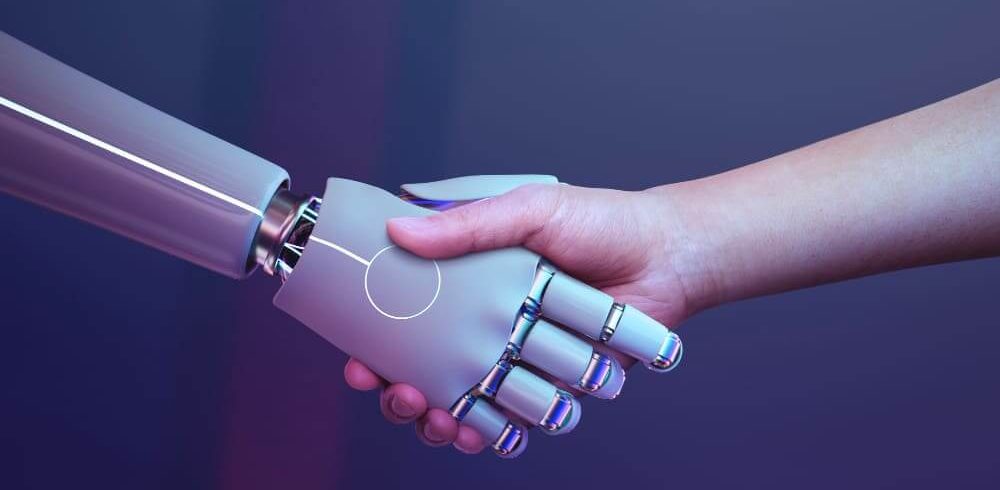AI in marketing

In the past few years, one digital marketing tool with almost limitless potential is gaining continuously more popularity. Artificial intelligence (AI) is fast becoming the digital marketing landscape. As companies realize the value of taking the lead in a competing market, many of them are turning to artificial intelligence (AI) as a marketing instrument.
Let's look into the terms
Many people mistakenly think that machine learning and artificial intelligence are related issues. Artificial intelligence (AI) is a common category that describes intelligent machines capable of carrying out jobs typically handled by persons—such as troubleshooting and adoption of decisions.
Machine learning is more specific than AI: it’s the procedure of training algorithms so that they can make good use of data and make forecasts or decisions without being specifically programmed.
In other words, machine learning is a procedure whereby technology is able to modify its behavior based on past experience. Machine learning uses algorithms to analyze large sets of information and find patterns, which in turn helps make sensible decisions.
While artificial intelligence and machine learning are both key components of intelligent machines, they refer to different aspects of the whole procedure.
Why is AI needed in Marketing?
Thanks to its human language technology abilities, artificial intelligence helps companies to improve the quality of client support by deploying chatbots that communicate with clients. It can also be used within existing procedures—such as sales and marketing—to increase efficiency or add new features. For example, artificial intelligence is effective of solving the issues like these:
- To develop creatives, such as automatically generating promotional messages, copywriting, or drawing pictures.
- To automate ad campaigns- select the best channels or advertisement life.
- To deal with contextual advertising, for example, collecting topics and semantics.
- To measure the success of your advertising campaigns.
- To sell through streaming services.
- To create smart TV ads and much, much, much more.
Now let's look at statistics.
Salesforce’s blind survey of more than 8,000 people found that artificial intelligence in sales increased by 186% between 2018 and 2020. Besides reducing costs by replacing manual work, artificial intelligence also enhances existing processes and mechanisms. For example, artificial intelligence can propose hypotheses for personalized texts.
Forbes surveys also show that use of artificial intelligence results in 52% higher revenue, 51% greater client retention, and 45% greater chances of launching a successful new product.
Moreover, 37% of CIOs researched by Gartner have already operated AI.
Spheres of AI use in marketing
Artificial intelligence can be utilized to accomplish a large number of tasks, from photo correction to budget management. Here are some cases of AI being used for marketing: creativity is our first category.
- AI and video
AI utilizes data to study and create new content based on its knowledge.
Here’s a brief information on how AI creates videos.
- Data collection: AI algorithms use lots of data to develop videos, using pictures, videos or other visual content.
- Pre-treating: Object detection, segmentation, and tracking are operated on the collected data as part of the pre-treating step.
- Training the model: To train the AI model, the preprocessed information is used. By determining patterns and connections between different video elements, the model learns.
- Video generation: Once the model is ready, it can create new videos based on the input provided. This could involve creating new scenes, putting effects, or modifying existing content.
- Optimization: The created videos are optimized to advance their quality and reduce errors. This involves duties such as noise reduction, color correction, and image stabilization.
If we talk about usefulness, then you can automatize some stages of creative production with the help of artificial intelligence. IBM has created an algorithm to develop creatives by evaluating voiceovers, calls to action, or good shots. By analyzing each segment of the intended audience so thoroughly, Accelerator compiles materials into a new video. These videos generate 113% more clicks, according to statistics.
- AI and images
AI works with images by analyzing their features and content, manipulating them to improve their quality or extract useful information, and generating new images based on existing data.
Surely you have already come across services that can be used to test the operation of neural networks. For example, on the Nvidia InPainting site, anyone can retouch a photo using a smart brush.
Another example is a service from Microsoft that writes a description for any photo. If there are faces in the image, the service shows the emotions of people using emoji.
- AI and text
Artificial intelligence does not cope with text creatives as successfully as with previous tasks, but it tries very hard.
And although it cannot yet replace real copywriters, algorithms can give people ideas or automate routine tasks – if there is a need to organize a brainstorming session or you need to make a unique rewrite of articles, create messages for targeted advertising for a specific target audience, and much more.
In the context of article writing, GPTchatbot can be used as a tool to generate text based on the given topic or prompt. Even so, AI language models like GPTchatbot should not be used to replace human creativity and critical thinking when it comes to writing. For your message to be effectively communicated, you should still review and edit the generated text.
Frase is a platform that presents AI-powered instruments for preparation of material and optimization. The instrument analyzes content and provides ideas using natural language processing and machine learning.
- AI and communication
Main purpose of the AI language model is communication. It uses algorithms to recognize and react to user input. With the artificial intelligence technology creation, persons and machines have been able to communicate more promptly and competently. AI Virtual assistants and chatbots are used in industries including clients support, healthcare, and education much more nowadays.
Also, AI language models can be helpful with translation, voice recognizer, and text-to-speech conversion, making communication across different languages and cultures more accessible.
- AI and targeting
AI models have also revolutionized targeting in merchandising and promotion. Using data analytics and machine learning algorithms, AI-powered systems can foresee buyers behavior and determine patterns. Companies can thus deliver customized content and suggestions to buyers based on their likes. AI can also help brands optimize their advertising campaigns by analyzing data in real-time and making adjustments to improve performance. Overall, AI is transforming the way businesses communicate with their customers and target their marketing efforts, leading to more effective and efficient communication approaches. By the way, AI personalization is very widely used by Netflix to offer shows that customers will definitely like.
- AI and smart algorithms
With AI and algorithms, we are able to live and work more efficiently. In addition to self-driving cars, customized healthcare, fraud detection, and client support, these technologies are changing our lives.
Information processing speed and accuracy are two of the main advantages of AI and smart algorithms. The results of this analysis allow brands to make more sensible decisions and determine trends and patterns they would not be able to discern on a manual basis.
This is only a sampling of how AI is being used in marketing, but it illustrates that it can be used to increase sales and generate new leads.
Marketers believe that by 2025, most interactions between consumers and brands will be represented using artificial intelligence.
Search Blog
Categories
- Analytics(16)
- Android Development(1)
- Apps development(1)
- Branding(30)
- Branding solution(20)
- Business(20)
- Design(10)
- Design and creative(13)
- Digital solution(12)
- Facebook(4)
- Google Ads(6)
- Graphics(7)
- Instagram(8)
- Marketing research(15)
- Marketing solution(18)
- Marketing strategy(21)
- PPC(7)
- SEO(10)
- SMM(16)
- Social media marketing(10)
- TikTok(5)
- Uncategorized(7)
- Video content(4)
- Video production(4)
- Web Design(4)
- Web Development(6)
- YouTube(3)
Categories
- Branding solution (2)
- Brand identity
- Brandbook
- Design and creative (2)
- Graphic design
- Illustration
- Marketing solution (4)
- Marketing
- Marketing research
- Marketing strategy
- Mystery shopping
- Didgital solution(4)
- Google, Facebook ADS
- Search Engine Optimisation
- Website development
- Digital marketing
- Social media marketing(5)
- Facebook marketing
- Instagram marketing
- LinkedIn marketing
- Complex SMM
- TikTok Marketing
- Video production(4)
- Short video production
- Video animation
- Video presentation
- YouTube Marketing
Our Top Articles
Recent Posts
- Working with Negativity on Social Media October 3, 2023
- The Difference Between Rebranding and Redesign October 2, 2023
- Font Marketing Development: The Power of Typography in Branding and Design September 28, 2023
- Price Positioning in Design September 26, 2023
- The Formula of Successful Positioning September 25, 2023
Popular Tags
Advertising Analytics Artificial intelligence brand Brand book Brand identity Brand management Brand platform Brand positioning Brand recognition Brand visibility Content marketing Customer Journey Map Customer segmentation Digital advertising Digital marketing Facebook Google Ads Graphic design Influencer marketing Instagram Instagram post Landing page Logo design Marketing Marketing agency Marketing efficiency Marketing funnel Marketing strategy Native advertising Pack design PPC Reels SEO Short videos SMM Social Media Social Media Marketing SWOT analysis Target audience TikTok Tone of voice Website Website development YouTube
